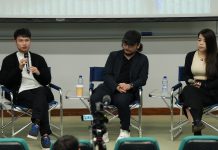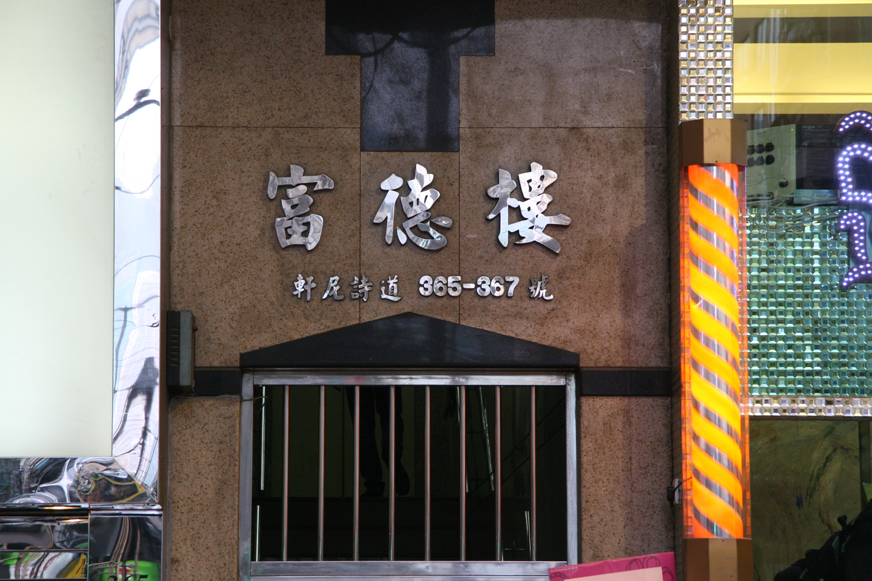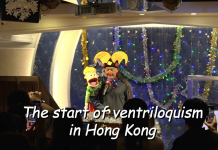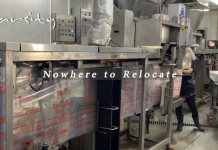Reporters: Lotus Lau, Billy Leung, Charlie Leung
Editor: Jennifer Kwok
Foo Tak Building in Wan Chai looks like any other old tenement building. It is easily overshadowed by Wan Chai’s flashy new blocks and impressive heritage buildings. But behind its ordinary appearance, Foo Tak has much more to offer.
Foo Tak Building was built in 1968. After a major renovation in 2003, the building’s main landlady no longer wanted to run it as a residential building. This was when she encountered the cultural critic and video artist May Fung Mei-wah in a conference about local artists. It was then that she suddenly came up with the idea of turning Foo Tak Building into an artists’ village.
But it takes more than enthusiasm and financial means to do the job. Lacking knowledge of and insights into the cultural circle, the landlady enlisted Fung, who has been working in the art circle for years and has extensive experience and networks in the field. She then took a back seat and let Fung do the screening of artists.
“I act like a middleman. Studios in factories buildings and art villages were not common at that time so I helped her.” says Fung.
Fung says the criteria for selecting tenants is simple: any artist or cultural group who is too poor to afford to rent a place at market rates and has a clear goal for their work is eligible to move in. Over the years, she has selected numerous artists – from painters, indie movie-makers to publishers, Foo Tak has them all.
Since 2008, Fung has been joined by Kobe Ho Ting-ting, to manage Foo Tak’s affairs. Ho also runs a bookstore named Art and Culture Outreach (ACO) on the first floor.
The books available here are very different from those in mainstream bookstores. You will not find any bestsellers because Ho only sells books that are generally neglected yet important.
With the help of her partner Sunny Chan Dart-sun, Ho started a small restaurant, Slow Experience in March this year. Unlike ordinary restaurants in Hong Kong, it is set up with a progressive vision of promoting sustainable development through dining..
None of these could have happened were it not for the existence of Foo Tak Building. “There would be no Slow experience without Foo Tak Building,” says Ho, “If we didn’t have this space in Foo Tak Building, we wouldn’t have the platform to promote this new experience to the citizens.”
The Foo Tak model runs counter to that of a top-down scheme put forward by the government. It allows for greater flexibility and freedom which encourages mutual trust between owner and tenants. For Ho, this is what makes Food Tak Building stand out from the crowd.
Vincent Chui Wan-Shun, Artistic Director of Ying E Chi, a group that promotes and distributes local independent films, is one of the tenants here. Chui says his rent is astonishingly cheap for Wan Chai. But apart from that, he also appreciates the relaxed management style of Foo Tak Building which enables things to develop organically. Chui believes this can be more fruitful than government involvement.
“The Hong Kong government can’t solve the problem by just throwing some money now and again,” says Chui, “Many times, the community can also do a good job, and it’d be great if [the government] could put some resources into advancing the community’s work.”
Another artist to benefit from Foo Tak is Roy Tsui, one of the founders of the monthly pamphlet, Black Paper. Tsui says what sets Foo Tak apart is the warmth of the relationships between those who work in the building..
“You can’t find this kind of interaction in any IFC office,” says Tsui, “This is what’s so valuable apart from the cheap rent.”
As the old Chinese saying goes “things work the best when you don’t force it”, this definitely applies to the Foo Tak artists’ village.










































